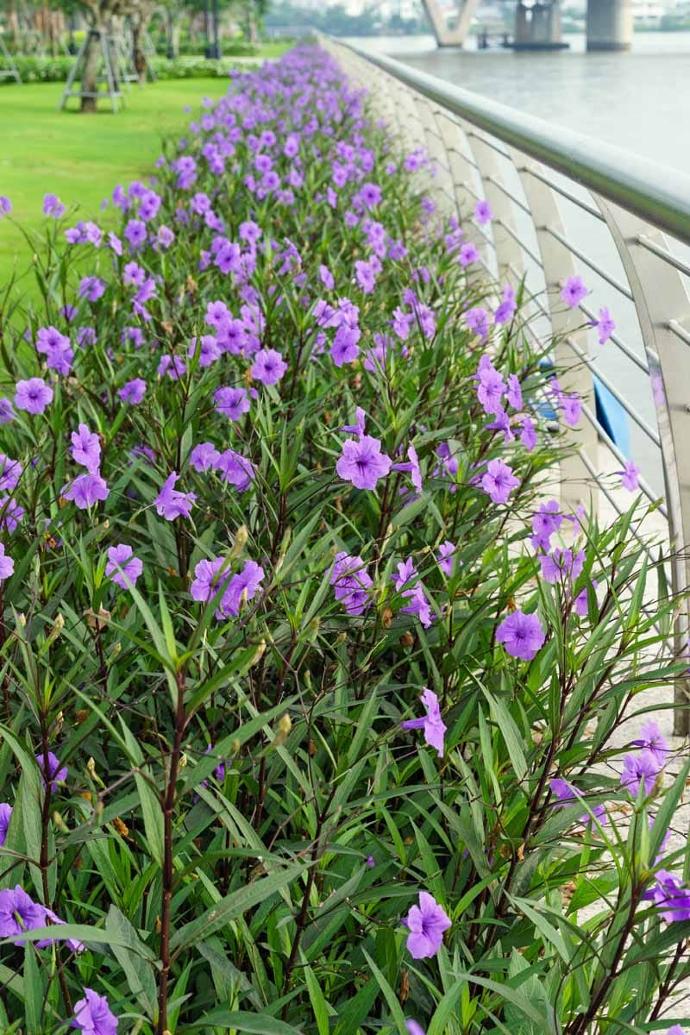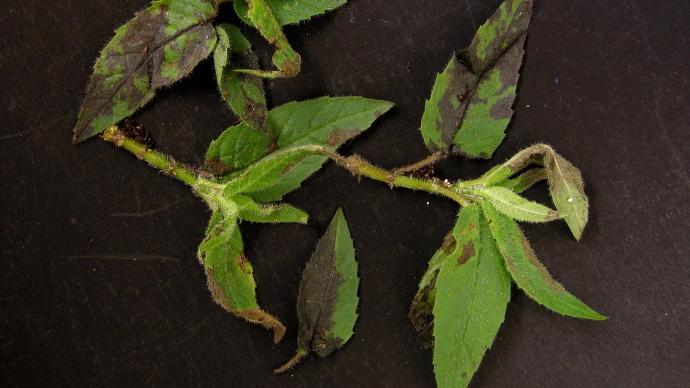Ruellia Plant
Ruellia, also known as Ruellia simplex or Mexican Petunia, is an outdoor flowering plant. Plant in well-draining soil with full sun to partial shade. Water consistently and deadhead spent flowers for continuous blooming. Pruning helps maintain a compact and bushy appearance.
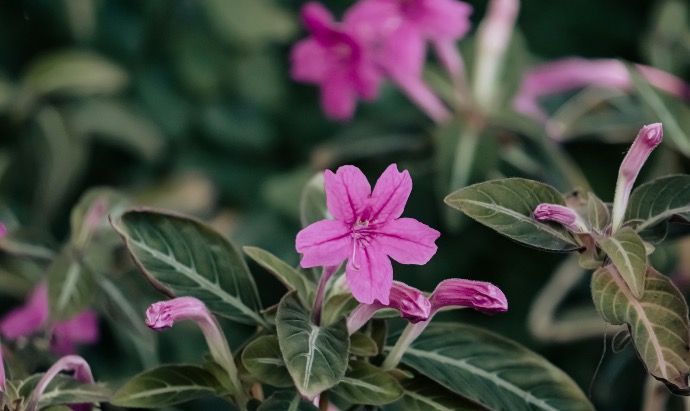
Habit
Perennial
Height
30-100 cm
Growth
Fast
Soil
Well-drained sandy
Shade
Full Sun to partial shade
Moisture
Moist
Edible
No
Medicinal
No
Origin
South America
Climatic Condition
Tropical, Subtropical
Temperature (°)
15-35°C
Humidity (%)
50-80%
Potting media
Peat, compost
Fertilizers
Organic fertilizer
Watering
Moderate
Plant Weight
1-2 kg
Flowering Time
Year-round
Soil Ph level
5.5 - 7.5
Water Ph level
5.5 - 7.5
Soil EC
1-2 dS/m
Yield Per Plant
Ornamental
NPK ratio
10:10:10
life Span
Perennial
Health Benefits
Ornamental, attracts pollinators
Suggested Grow Media or Potting Mix ?
50% peat, 25% compost, 25% sand
Suggested Fertigation/Fertilizers
Fertilize every 2-3 weeks with a balanced fertilizer.
Common Diseases and Remedies
Bacterial leaf spot , Rust.
Large black, roughly circular, zonate spots concentrated on leaves at the base of the plant, Small, round to elongate brown pustules form on both leaf surfaces.
Neem oil , Salt + Lime: Sprinkle a little bit of salt on the rust, then squeeze the lime over the salt until it is soaking or Neem oil.
HEALTH BENEFITS
· Used in traditional medicine for treating urinary tract infections.
· Contains diuretic and anti-inflammatory properties.
What is an Ruellia plant?
Ruellia is a type of flower commonly known as Ruellias or wild petunia. Although both genera belong to the same family Asteraceae, they are not closely related to the genus Petunia.
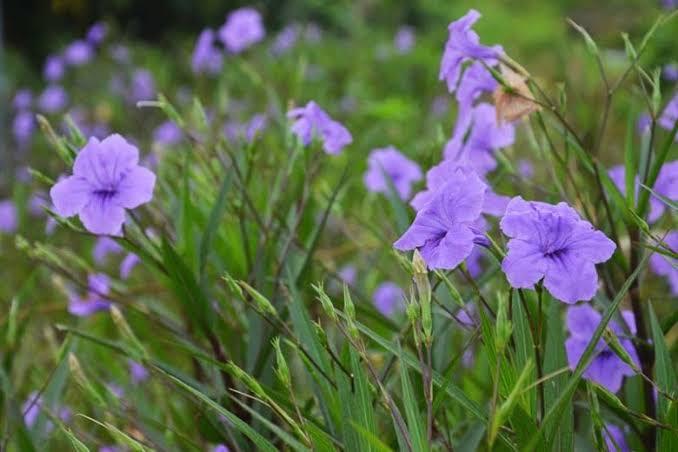
What Are The Different Types Of Ruellia Plants?
1. Ruellia simplex
Ruellia simplex, Mexican petunia, Mexican bluebell or Britton's wild petunia, is a flowering plant in the family Acanthaceae. It is in Mexico, the Caribbean and South America.
2. Ruellia tuberosa
Ruellia tuberosa, also known as minigan, golden root, snapdragon root and goat potato, is a flowering plant from the Acanthaceae family. It originates from Central America, but has become naturalized in Africa, South Asia, and Southeast Asia.
3. Ruellia humilis
Ruellia humilis is a flowering plant belonging to the Acanthaceae family. It is located in the eastern United States. It is grown as an ornamental plant. Ruellia humilis is native to the northeastern/north-central to southeastern/east-central regions of the United States.
4. Ruellia brevifolia,
Ruellia brevifolia, tropical wild petunia or red Christmas pride, is an ornamental plant belonging to the Acanthaceae family. It is found in South America, from Colombia to southern Brazil and northern Argentina.
5. Mackaya neesiana
Mackaya neesiana is a member of the Acanthaceae family. It has many synonyms, including Ruellia neesiana and Asystasiella neesiana. This species is mentioned under the description Ruellia neesiana in William Griffith's Travels in Assam, Burma, Bhutan, Afghanistan and Adjacent Countries.

What Are The Different Types Of Ruellia Plants
Location
Ruellia grows easily in full or partial sun and grows equally well in moist or dry soil. In fact, it can grow wild on islands or alleys and continue to grow without requiring any maintenance. Due to its small size, ruellia spreads easily.
Sun light
This plant prefers partial sun to full sun but can also tolerate some shade. Morning sun: Morning sun appears softer than afternoon sun. If possible, place the plant in a place where it will receive morning light. Temperature: Ruellia Simplex Trio prefers temperatures between 70°F and 85°F (21°C to 29°C).
Soil
Ruellia plants prefer moist, fertile soil. A mix of potting soil and sand can be a good choice. The soil should be slightly acidic, with a pH range of 6.0 to 7.0. Fertilizing: Ruellia plants benefit from regular fertilization during the growing season (spring and summer).
Hydration
Watering: Ruellia plants like well-drained soil and should be watered regularly. However, make sure you do not overwater the plant as this will cause root rot. Water your plants thoroughly once a week or more frequently in hot, dry weather. Soil: Ruellia plants like moist, fertile soil.

Nourishment
Plants above and below ground must be removed completely or they will sprout, rendering mowing, laying or overplanting Mexican petunias ineffective. Instead, the plant can be dug up with a shovel or equipment to remove all roots.
What are the benefits of Ruellia plant?
In the past, potatoes were used as a diuretic, antipyretic, analgesic, antihypertensive, anthelmintic, abortifacient, and emetic in the treatment of diseases such as kidney disease, pneumonia, gonorrhea, and syphilis. Its leaves and roots are used to treat urinary retention.
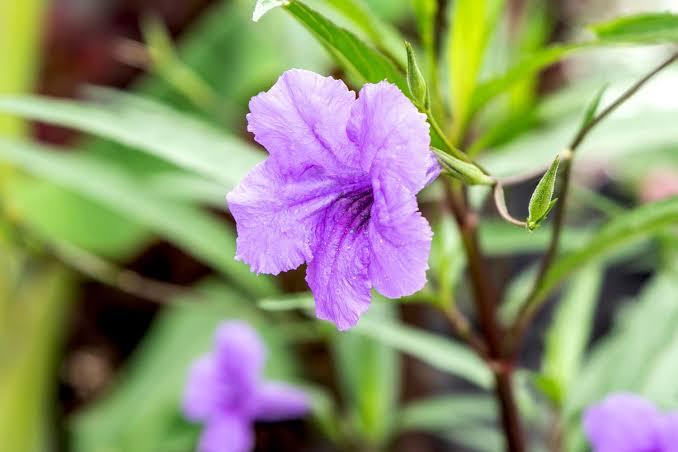
FAQs About Growing Ruella
1. How tall is Ruella?
Generally grows 3-4 feet tall in the wild, but can reach 2-3 feet tall in the garden. The plant branches from the ground into several woody stems with slender, linear, willow-like, dark green leaves (6 to 12 inches long and 30 inches wide), often purple in color.
2.What is the name of the Ruellia plant?
Ruellia is a type of flower commonly known as Ruellias or wild petunia.
3. What are the characteristics of the Ruellia simplex plant?
Habits: Perennial plant that can grow up to 1 meter tall. Stems green or purple in color. Leaves: dark green, opposite, lanceolate, about 15-30 cm long and 1-2 cm wide, with prominent veins on the underside and smooth or wavy edges.
4. What is the use of Ruellia flowers?
It contains phytochemicals: glycosides, alkaloids, flavonoids and triterpenoids. This genus has traditionally been considered useful in treating colds, asthma, fever, pneumonia, hypertension, eczema, and diabetes.
5. Can we eat Ruellia ?
Ruellias are ornamental plants, some are used as medicinal plants, but many are known or suspected to be poisonous.
